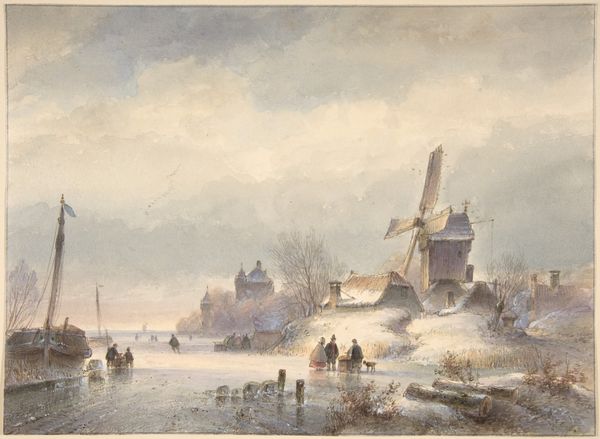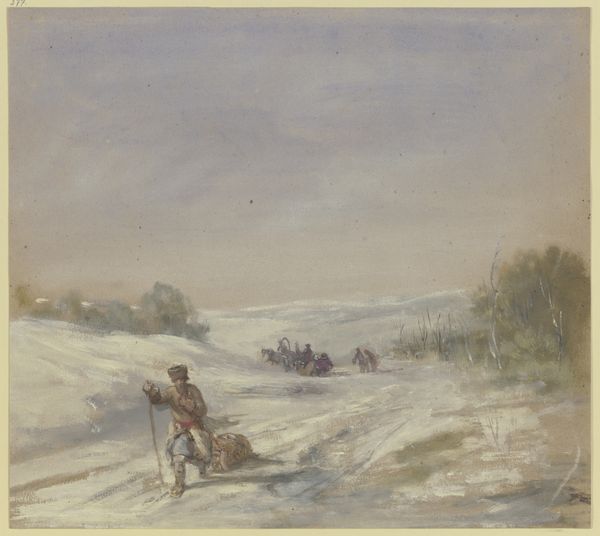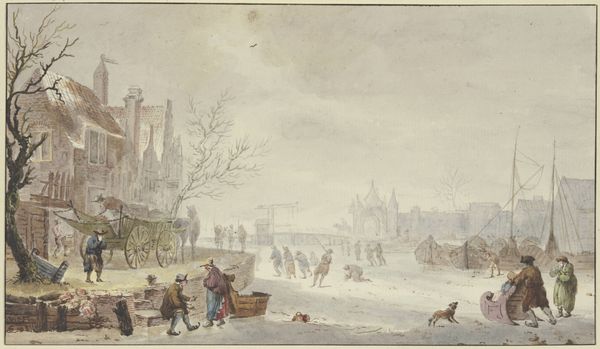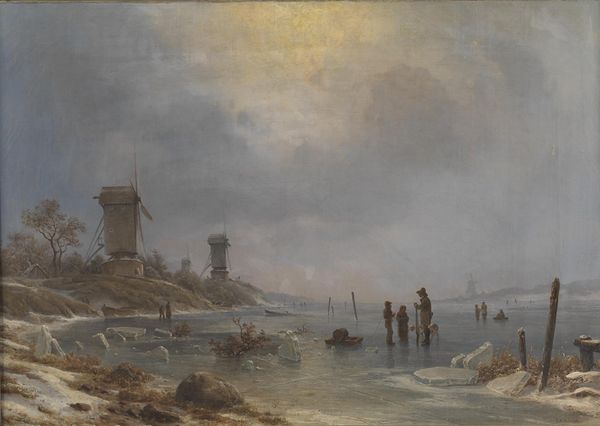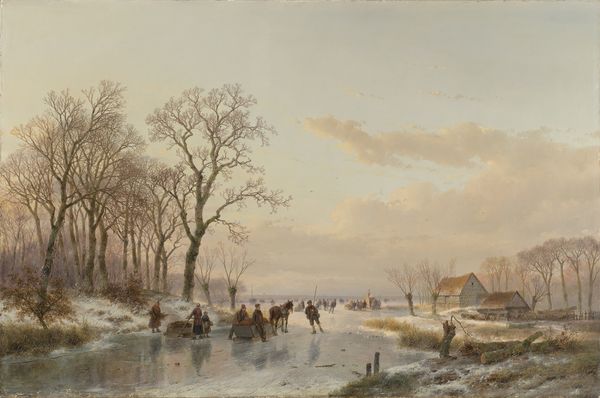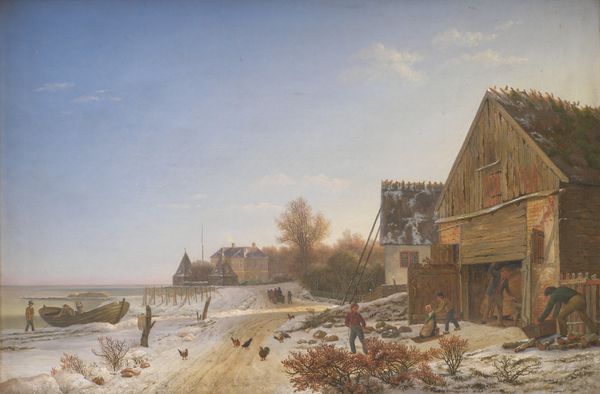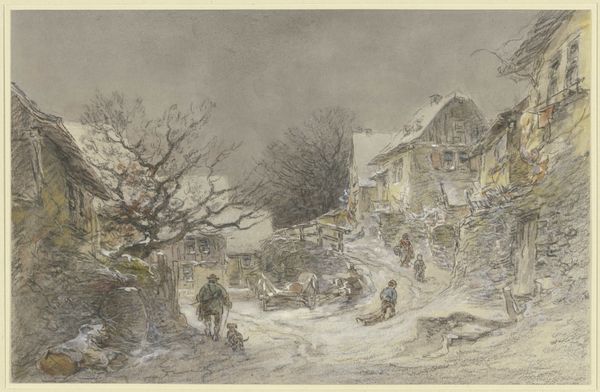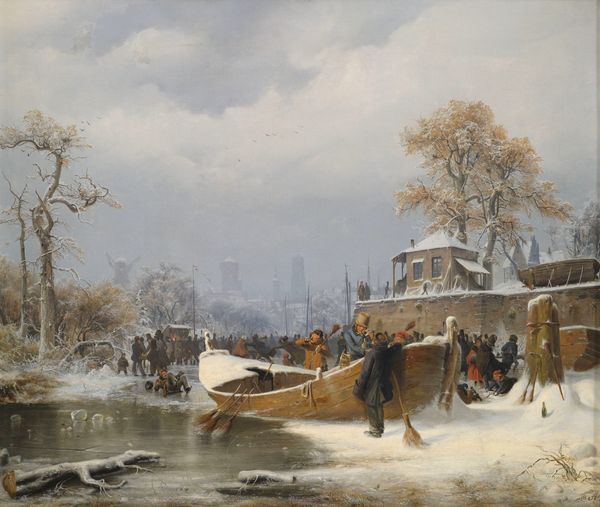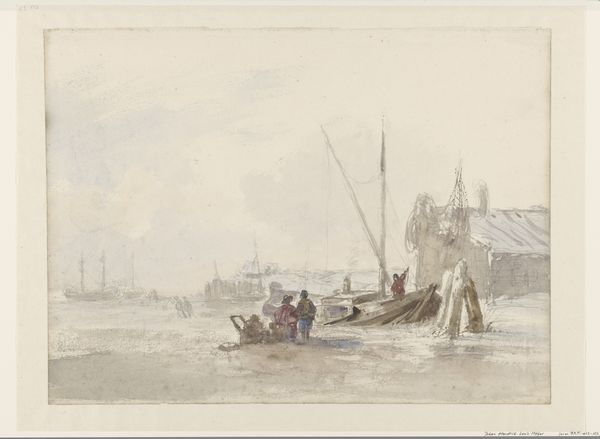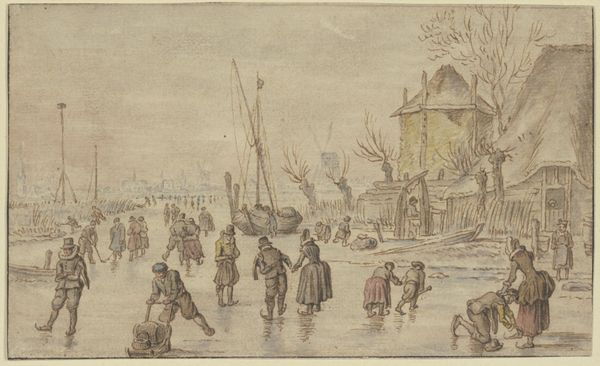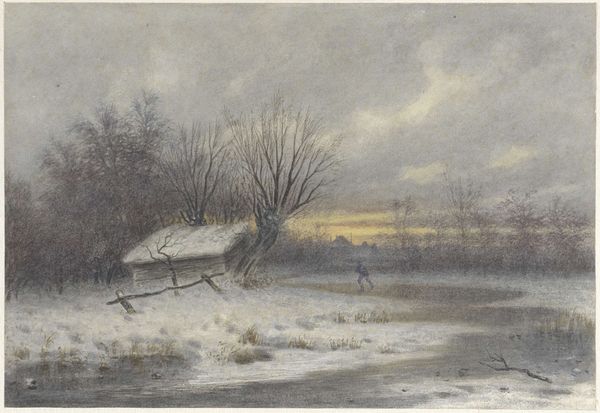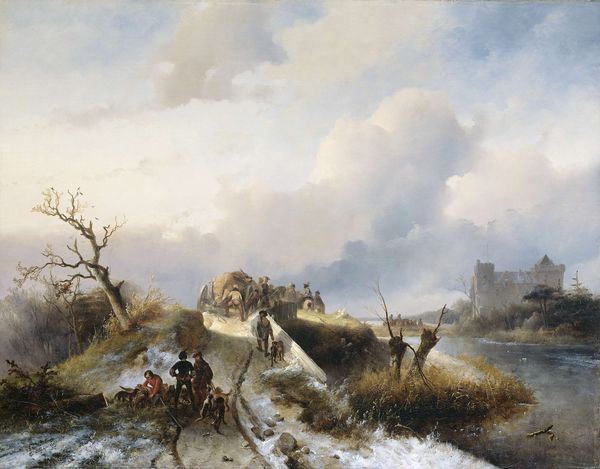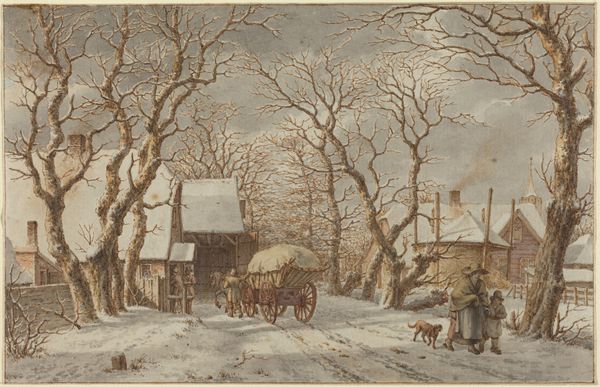
drawing, painting, paper, watercolor
#
drawing
#
16_19th-century
#
painting
#
landscape
#
figuration
#
paper
#
watercolor
#
coloured pencil
#
romanticism
#
genre-painting
#
watercolor
Copyright: Public Domain
Curator: Let's turn our attention to Andreas Achenbach's work from 1836 or 1837, titled "Schiffer bei einem eingefrorenen Schiffe," which translates to "Skipper by a Frozen Ship." Editor: It has a wonderfully muted, almost monochromatic palette, evoking a real sense of biting cold. The composition, with the grounded ship as its central anchor, is very strong. Curator: Achenbach, known for his Romantic landscapes, especially maritime scenes, created this particular piece with watercolor and colored pencil on paper. And what interests me is thinking about the socioeconomic implications of depicting a frozen harbour: for sailors who may rely on that access for work and the city behind that is dependent on trade. How might they survive an unusually frozen winter? Editor: I see your point, but notice how the light catches the details of the wooden hull, emphasizing its textures, the various hues layering snow with exposed timber create subtle differences, adding depth despite the pale palette, as if we were staring out in this place, how we might perceive different values when the sunlight illuminates something through frost, the romantic artist carefully manipulating our eye. Curator: Indeed. And there’s an apparent casualness in the figures clustered around the ship, in spite of the frigid environment, and how the viewer would think of it and the society back then. What were the available methods, what kind of aid did communities receive? How are the working classes dependent on trade treated during such an environmental upset? Editor: Formally, these are compelling formal qualities, to see how they gather by this massive structure. In some ways they seem trapped, like the vessel beside them, dependent on a turn of tide. Curator: So you read it more as a tableau of dependency, and are unmoved by the material hardships facing the working class? It's easy to praise aesthetics when unconcerned with socio-economic precarity. Editor: Not at all! Only, for me, the primary allure exists on the canvas first. Consider the careful compositional arrangement Achenbach presents; whether consciously or unconsciously created to signal material despair matters less than the balanced, harmonic whole achieved regardless. Curator: Ultimately, I think the image speaks to broader social and economic histories during periods of drastic environmental changes, revealing complex layers of Romantic aesthetics and critical commentary. Editor: And, ultimately, both our perspectives are relevant for appreciating the many facets Achenbach so cleverly wove together.
Comments
No comments
Be the first to comment and join the conversation on the ultimate creative platform.
